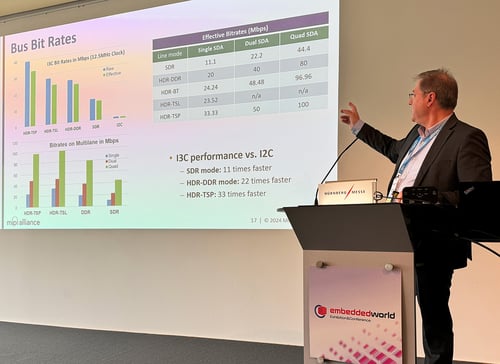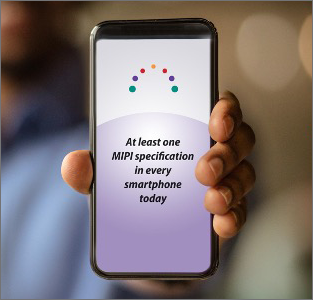MIPI SoundWire®
Audio
-1.png?width=1800&height=900&name=Banner%20Images%20-%20MIPI%20(8)-1.png)
Developed by: Audio Working Group
A comprehensive, unified interface for small audio peripherals
Quick Facts
-
Primary Use
For cost-sensitive audio peripherals
-
Physical Layer
CMOS I/Os
-
Fundamental Features
- High performance
- Low power
- Low EMI
-
Use Cases
- Microphone arrays
- Stereophonic and surround sound
- Low-latency multichannel audio transfers
Industries
Get the Specification
-
Current Version
MIPI SoundWire® v1.3 (September 2025)
Member version
-
Related Specifications
-
Conformance Test Suite
-
Previous Versions
All SoundWire versions are available to MIPI members on the member website (Causeway).
Overview
MIPI SoundWire, introduced in 2014, consolidates many of the key attributes in mobile and PC audio interfaces, providing a common, comprehensive interface and scalable architecture that can be used to enable audio features and functions in multiple types of devices and across market segments. It supports the use of advanced amplifiers and microphones. In addition, it can also optimize speaker protection, microphone power and performance, noise cancellation and always-listening audio input.
Key Features
The key features of MIPI SoundWire include a double-data rate, configurable frame size, low complexity, low power, low latency, optional multilane extensions, PCM and PDM format, multichannel data and a low gate count.
It can be embedded in small, cost-sensitive audio peripherals such as amplifiers and microphones. It is also used in smartphones, tablets, PCs, automotive and embedded systems.
Latest Release
Adopted in September 2025, version 1.3 relocates the SoundWire DisCo information directly into the SoundWire specification itself as a new section. In previous SoundWire versions, the DisCo information was published as the separate DisCo specification for SoundWire.
Previous updates to the SoundWire specification featured improvements to further aid the integration of audio components in mobile and mobile-influenced systems. These updates benefit SOC, device and system vendors as well as OEMs and system integrators:
- Improvements that make it easier to implement SoundWire in systems with a wide range of hardware topologies, including larger form factors
- Features that lay the foundation for an upcoming device class specification for communicating audio device properties in the OS
- Various optimizations, including a way to directly communicate the bus clock speed to system hardware
MIPI SoundWire can coexist with MIPI SLIMbus or non-MIPI interfaces through bridging solutions. The software component for previous versions, MIPI DisCo Specification for SoundWire, is available to the public.
Note: The full MIPI SoundWire specification is available only to MIPI Alliance members. For information about joining MIPI Alliance, visit Join MIPI.






